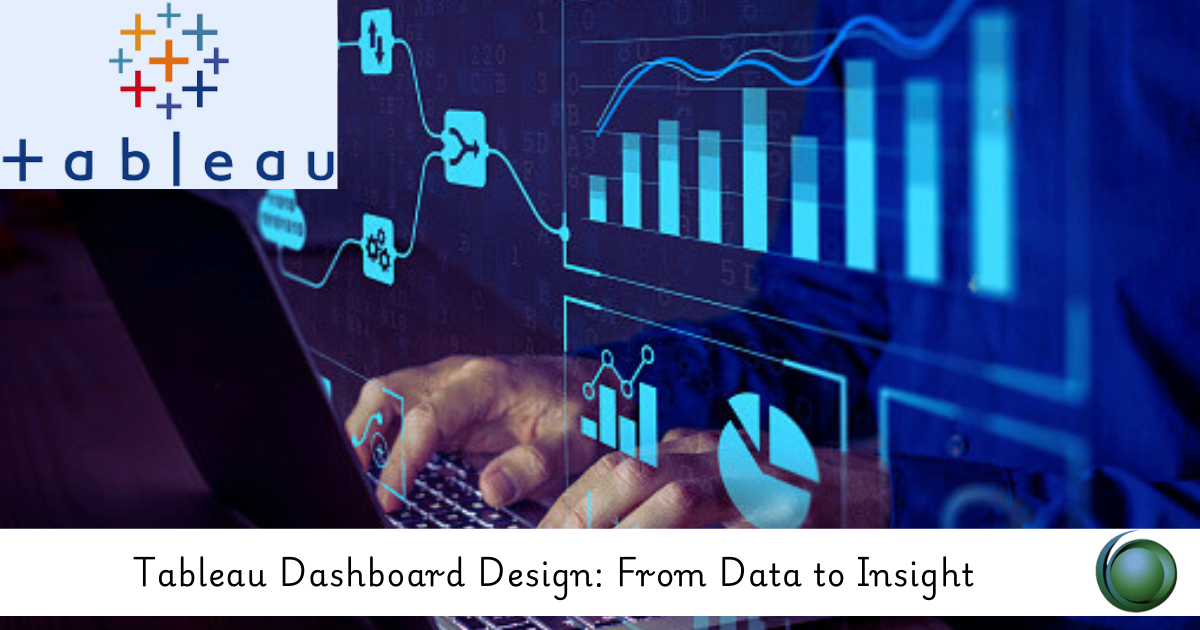Description
Introduction of Tableau Dashboard Design:
In today’s data-driven world, dashboards are essential tools for conveying complex information clearly and effectively. “Tableau Dashboard Design: From Data to Insight” is a comprehensive training course that focuses on creating insightful and interactive dashboards using Tableau. This course will guide you through the principles of good dashboard design, the technical skills needed to implement these principles in Tableau, and the strategies for turning raw data into compelling visual stories. By the end of this course, you’ll be able to design dashboards that not only look professional but also communicate data insights in a meaningful way.
Prerequisites:
- Basic knowledge of Tableau, including connecting to data and creating simple visualizations
- Understanding of data concepts such as measures, dimensions, and aggregations
- Familiarity with design principles is beneficial but not required
Table of Contents:
1: Principles of Effective Dashboard Design
1.1 Introduction to Dashboard Design
1.1.1 What makes a good dashboard
1.1.2 The role of dashboards in data storytelling
1.1.3 Common pitfalls in dashboard design
1.2 Design Principles for Dashboards
1.2.1 Clarity, simplicity, and user focus
1.2.2 The use of color, layout, and typography
1.2.3 Understanding your audience and their needs
1.3 Case Studies of Well-Designed Dashboards
1.3.1 Analysis of successful dashboards
1.3.2 Discussion of design choices and their impact
1.3.3 Lessons learned from real-world examples
2: Preparing Your Data for Dashboards
2.1 Data Structuring for Dashboards
2.1.1 Importance of clean and well-structured data
2.1.2 Organizing data for easy visualization
2.1.3 Hierarchies, groups, and sets in Tableau
2.2 Data Preparation Techniques
2.2.1 Using Tableau Prep for data cleaning and structuring
2.2.2 Data aggregation and pre-processing
2.2.3 Managing large datasets for optimal performance
2.3 Advanced Data Preparation
2.3.1 Creating custom fields and calculated measures
2.3.2 Using parameters and filters to refine data
2.3.3 Preparing data for interactive elements
3: Creating Interactive Visualizations
3.1 Designing with the User in Mind
3.1.1 Choosing the right chart types for your data
3.1.2 Enhancing user experience with interactive elements
3.1.3 Balancing detail and simplicity in visualizations
3.2 Advanced Visualization Techniques
3.2.1 Using dual-axis and combined charts
3.2.2 Creating custom charts like bullet charts and sparklines
3.2.3 Incorporating maps and geospatial data
3.3 Interactivity and User Engagement
3.3.1 Adding filters, parameters, and actions
3.3.2 Designing for drill-down and drill-through capabilities
3.3.3 Enhancing storytelling with interactive elements
4: Dashboard Layout and Design
4.1 Principles of Dashboard Layout
4.1.1 Designing for clarity and ease of use
4.1.2 Using grids, whitespace, and alignment effectively
4.1.3 Hierarchical structuring of information
4.2 Building Dashboards in Tableau
4.2.1 Adding and arranging visualizations
4.2.2 Using containers for layout management
4.2.3 Creating responsive dashboards for different devices
4.3 Design Best Practices
4.3.1 Color theory and contrast for visual impact
4.3.2 Typography and font choices in dashboards
4.3.3 Ensuring accessibility in dashboard design
5: Enhancing Dashboards with Advanced Features
5.1 Adding Advanced Interactivity
5.1.1 Parameter-driven dashboards
5.1.2 Set actions and their applications
5.1.3 Using URL actions for external linking
5.2 Incorporating External Content
5.2.1 Embedding web content and videos
5.2.2 Integrating external data sources in dashboards
5.2.3 Using Tableau extensions for enhanced functionality
5.3 Optimizing Dashboard Performance
5.3.1 Techniques for improving load times
5.3.2 Managing data extracts and connections
5.3.3 Troubleshooting common performance issues
6: Publishing and Sharing Dashboards
6.1 Publishing Dashboards in Tableau
6.1.1 Preparing dashboards for publication
6.1.2 Publishing to Tableau Public, Server, and Online
6.1.3 Managing permissions and access
6.2 Sharing and Embedding Dashboards
6.2.1 Sharing options within and outside your organization
6.2.2 Embedding dashboards in websites and applications
6.2.3 Using Tableau’s API for custom integrations
6.3 Collaborative Dashboard Development
6.3.1 Working with teams in Tableau
6.3.2 Version control and collaboration best practices
6.3.3 Gathering feedback and iterative design
7: Capstone Project and Review
7.1 Capstone Project Overview
7.1.1 Project guidelines and expectations
7.1.2 Selecting a business problem and dataset
7.1.3 Designing a complete, interactive dashboard
7.2 Review and Q&A
7.2.1 Recap of key design and technical concepts
7.2.2 Open Q&A session for participants
7.3 Project Presentations
7.3.1 Participants present their final dashboards
7.3.2 Group feedback and discussion
This course is designed to guide you through the entire process of dashboard creation, from understanding the principles of good design to implementing advanced features in Tableau. The capstone project at the end of the course will provide a hands-on opportunity to apply your learning in a real-world context, ensuring that you can create dashboards that are both functional and insightful.
If you are looking for customized info, Please contact us here







Reviews
There are no reviews yet.